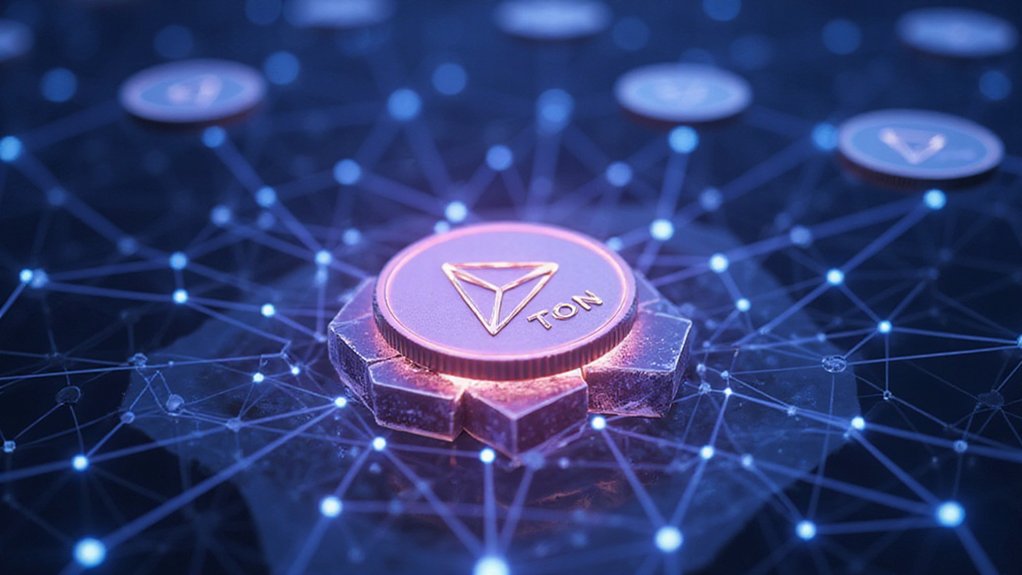Initial DEX Offerings (IDOs) represent cryptocurrency’s evolutionary fundraising mechanism, utilizing decentralized exchanges to launch projects without traditional intermediaries. These automated market makers create liquidity pools with established cryptocurrencies like Ethereum, governed by smart contracts that enable immediate trading and efficient price discovery. While offering superior investor protections and cost efficiency compared to ICOs and IEOs, IDOs aren’t without risks—smart contract vulnerabilities and regulatory ambiguity lurk beneath their innovative surface. The crypto ecosystem continues to reshape itself through these decentralized paradigms.

The meteoric rise of Initial DEX Offerings (IDOs) represents one of the more fascinating evolutionary steps in cryptocurrency fundraising—a domain already known for its rapid mutations and adaptations. Essentially, IDOs function as decentralized crowdfunding mechanisms that utilize decentralized exchanges (DEXs) to launch new cryptocurrency projects, eliminating traditional intermediaries while ensuring a level of transparency previously unattainable in the crypto fundraising ecosystem.
The mechanics of an IDO are elegantly straightforward: project developers create a liquidity pool with an established cryptocurrency (typically Ethereum), after which smart contracts—those impartial digital arbiters—govern the entire process from token distribution to trading enablement. What distinguishes IDOs from their predecessors is the immediate liquidity they provide; investors can trade tokens the moment the offering goes live, a stark contrast to the often protracted waiting periods associated with traditional models. These liquidity pools serve as automated market makers that facilitate efficient price discovery while ensuring continuous trading availability for new tokens.
IDOs have emerged as formidable alternatives to Initial Coin Offerings (ICOs) and Initial Exchange Offerings (IEOs), offering superior investor protections while managing (though not always successfully) the murky regulatory waters that have capsized many a crypto venture. The cost efficiency alone—achieved through disintermediation—makes IDOs particularly attractive for nascent projects operating with limited capital reserves. Recently, some IDO platform pages became temporarily unavailable due to new UK regulations, affecting investor access to certain offerings.
Despite their advantages, IDOs are not without their Achilles’ heels.
The relative absence of regulatory oversight (a feature celebrated by some, derided by others) creates fertile ground for investment scams, while smart contract vulnerabilities remain persistent specters threatening even the most promising offerings.
Furthermore, the dependence on liquidity pools introduces its own volatility concerns—a reminder that innovation and risk often travel as companions.
As integral components of the broader Decentralized Finance ecosystem, IDOs represent more than mere fundraising mechanisms; they embody the ethos of decentralization that animates the entire cryptocurrency movement. With their community-driven approach and innovative token use cases, IDOs continue to reshape the landscape of crypto finance—for better or worse, depending on whom one asks.
Frequently Asked Questions
How Do IDOS Differ From ICOS and IEOS?
IDOs differ from their fundraising predecessors in several fundamental ways.
Unlike ICOs (which operate independently on project websites) and IEOs (which rely on centralized exchanges as gatekeepers), IDOs leverage decentralized exchanges for permissionless, intermediary-free token sales.
They provide immediate liquidity through DEX pools—a stark contrast to the delayed trading timelines of traditional offerings.
Security mechanisms also diverge: IDOs utilize transparent smart contracts, while IEOs depend on exchange vetting, and ICOs (notoriously) often operated with minimal oversight.
What Are the Risks Associated With Investing in IDOS?
Investing in IDOs—those shiny new darlings of the DeFi space—carries a veritable cornucopia of risks.
Smart contract vulnerabilities lurk beneath polished interfaces, while the specter of rug pulls haunts the pseudonymous developer landscape.
Market volatility (often breathtaking in its intensity) can eviscerate portfolios, as whales manipulate shallow liquidity pools with impunity.
Meanwhile, regulatory uncertainty hovers like Damocles’ sword, with authorities increasingly scrutinizing previously unregulated offerings.
Even audited projects aren’t immune to the occasional catastrophic coding oversight.
Which Platforms Currently Host the Most Successful IDOS?
Polkastarter reigns supreme in the IDO landscape, having launched hundreds of tokens across multiple blockchains with impressive success rates.
DAO Maker follows closely, boasting remarkable projects like ChainPort and Step.app while having raised over $32 million for its ventures.
While newer platforms like ApeTerminal and ChainGPT show promise, the established players maintain dominance.
Surprisingly, raw ROI figures don’t always correlate with platform prominence—PancakeSwap offers superior returns (3.1x) despite lesser recognition in the IDO space specifically.
How Can I Evaluate an Ido’s Potential for Success?
Evaluating an IDO’s potential requires a multifaceted approach examining four critical pillars: the project team’s credibility and track record; tokenomics structure and genuine utility; DEX platform quality and liquidity arrangements; and community engagement metrics.
Savvy investors scrutinize smart contract audits (a non-negotiable baseline), vesting schedules that discourage pump-and-dump scenarios, and the project’s competitive differentiation within its niche.
The intersection of these elements—rather than any single factor—ultimately determines an IDO’s viability.
Are IDOS Regulated in Major Cryptocurrency Markets?
IDOs exist in a regulatory twilight zone across major markets, with jurisdictions demonstrating varying appetites for oversight.
While traditional securities frameworks may apply (depending on token characteristics), no uniform regulatory apparatus exists specifically for IDOs.
This regulatory vacuum leaves projects maneuvering a complex compliance labyrinth, with exchanges often implementing self-regulatory measures to compensate.
The evolving landscape suggests increased scrutiny is inevitable, though the form such regulation might take remains—predictably—uncertain.









